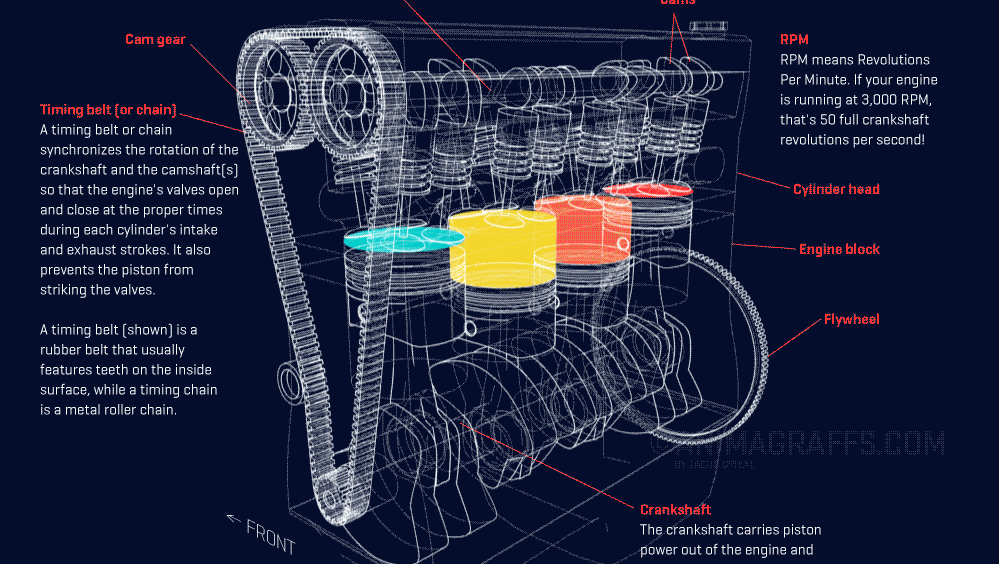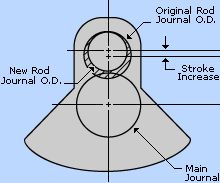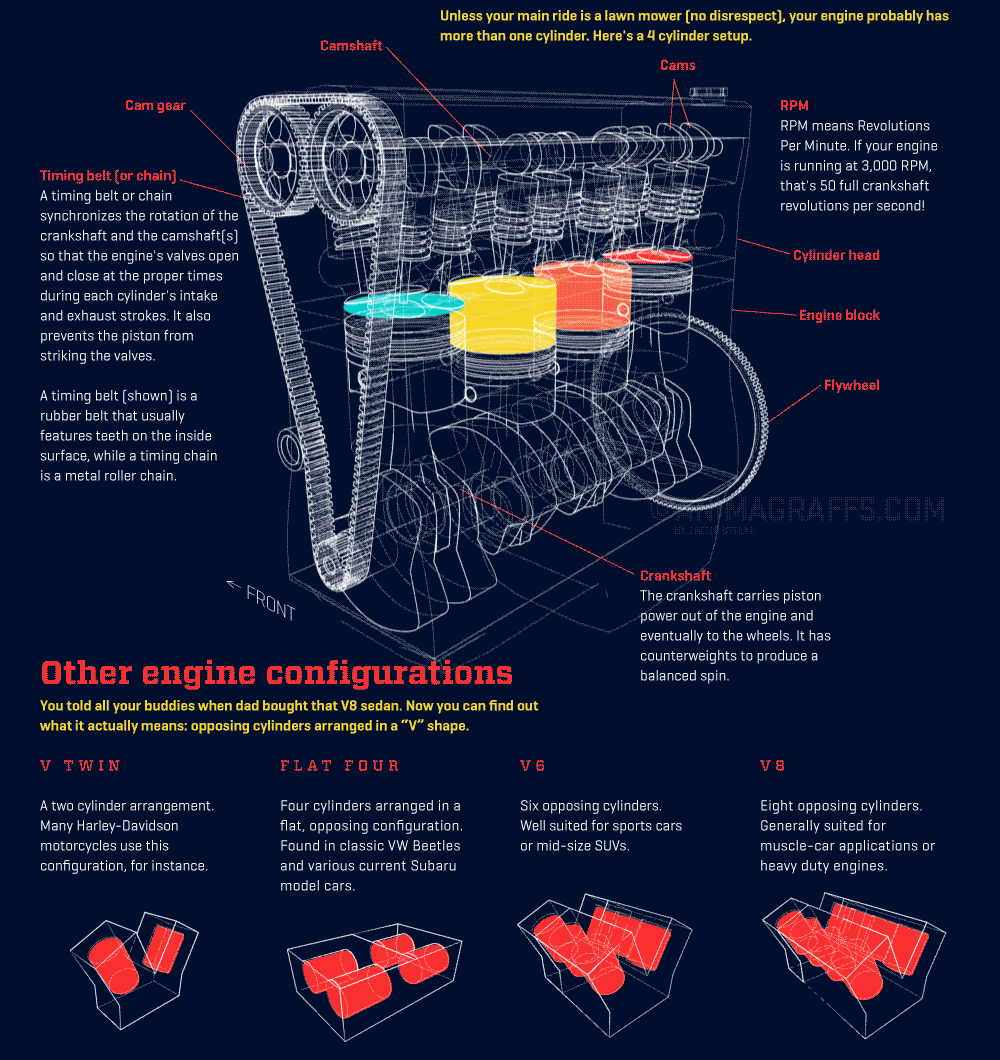What is the Engine Capacity and all you Need to Know About it
We hear a lot about engine cc, engine capacity, displacement or engine size, etc. But sometimes there is confusion understanding the concept. In the States, many old school gearheads use the term CI (cubic inch) instead of CC (cubic centimeter). In this blog, we are explaining what the capacity of an engine is, how is it measured, and we have talked about few ways automakers use to increase the capacity of the engine.
The engine capacity, also referred to as the engine size/volume/displacement, is the total volume swept by all the pistons of the engine inside the cylinder. It basically is the cumulative of the volumes swept by each piston when it moves from top dead center (TDC) to bottom dead center (BDC), i.e., a stroke.
Note that it is not the total volume of the combustion chamber since it includes the volume from TDC to the top of the engine cylinder (clearance volume). It can be explained with the diagram below:
- Measurement:
The engine capacity is measured in either cubic centimeters (CC/cm3) or in cubic inches (CI). Sometimes it is also measured in liters corresponding to cubic centimeters. This means that a 1000 CC engine has a capacity of 1 liter.
The capacity can be measured using the following formula:
???????????? ?????? (??) = (?/4) ∗ (????)2 ∗ (??????) ∗ (?????? ?? ?????????)
For example, a 427 Chevy V8 has a bore of 4.312 in, and it stroke is 3.65 in; therefore the displacement for that eight-cylinder engine is:
Vd = 3.1416/4 × (4.312 in)2 × 3.65 in × 8 = 426.4 CI
- Effect on Performance:
A larger capacity engine basically means that the piston can push more air-fuel mixture through the engine as the car moves. This means that the engine would be able to provide more power (but lesser RPM) since it would be able to burn more fuel. Hence, bigger the size, more the power. We can establish that:
?????? ?????? ∝ ?????? ????????
- Effect on Mileage:
This additional power, however, does come at a cost. Supplying more output means burning more fuel, and hence it disturbs the fuel economy. So more power means more fuel consumption at an additional cost and with a reduced mileage. Hence it is important to know the use of your vehicle in order to buy the best one with a trade-off between these factors.
As a rule:
??????? ∝ 1/?????? ????????
Increasing the Engine’s Capacity:
As can be seen from the formula, to increase the engine capacity or displacement volume (Vd), any one of the following three means can be adopted:
- Increase bore size
- Stroking
- Increasing the number of engine cylinders
Let’s see how they work:
- Increasing the Bore Size:
Increasing the bore size while keeping the rest constant would increase the swept volume of the pistons as the total volume per cylinder would increase by an extra factor. Increasing bore basically means increasing the diameter of the cylinder. This can be done by machining it equally from the inside preferably through a precision boring machine. An increased bore size would require an increase in piston diameter too, and this can be achieved either by replacing the pistons or machining them after addition of material.
Increase in bore size would allow for a larger air-fuel mixture volume to be pushed in consequently increasing the engine power.
- Stroking:
Stroking is just a fancy word for increasing the stroke size of the engine. Keeping the rest constant, increasing the stroke would definitely increase the engine’s capacity by increasing the travel of the piston so that it travels further more than the TDC. As stroke is controlled by the crank throw (or crank radius), i.e., one stroke means a travel of one crank diameter, so in order to increase stroke, this radius should be increased which is done by moving the crank journals further outward from the center line of rotation. This can be achieved through the following three ways:
- Offset grinding where the bearings are ground from one size causing them to be reduced in diameter but moving away from the center line.
![offsetgrind]()
- Welding where instead of grinding, additional material is welded on the outer side and then machined from the inside keeping the diameter intact.
- Custom cranks where the cranks are already stroked manufactured and can be replaced with the old one.
 Stroking not only increases the engine power but also adds to the engine torque and hence is much more effective# in increasing the engine capacity than boring.
Stroking not only increases the engine power but also adds to the engine torque and hence is much more effective# in increasing the engine capacity than boring.
- Increasing the Number of Cylinders:
Increasing the number of cylinders would obviously add to the engine capacity as extra volume would be added to the displacement. This isn’t exactly something you can do in your backyard garage.
Limitations:
Care should be taken though while increasing the capacity as it not only affects the engine clearances but also the compression ratios which can cause detonation (or knocking). Hence do your research before opting to increase the engine capacity.
We hope this article has helped you understand your vehicle’s engine better. Until next time, happy motoring!




